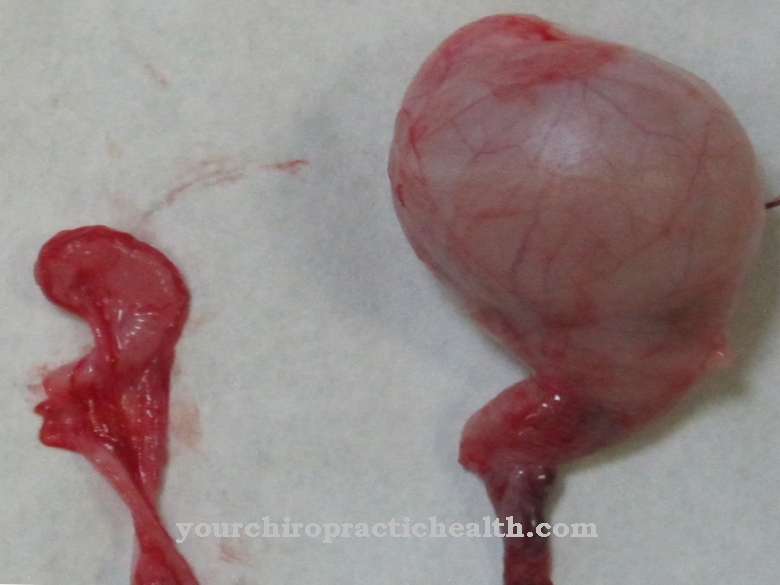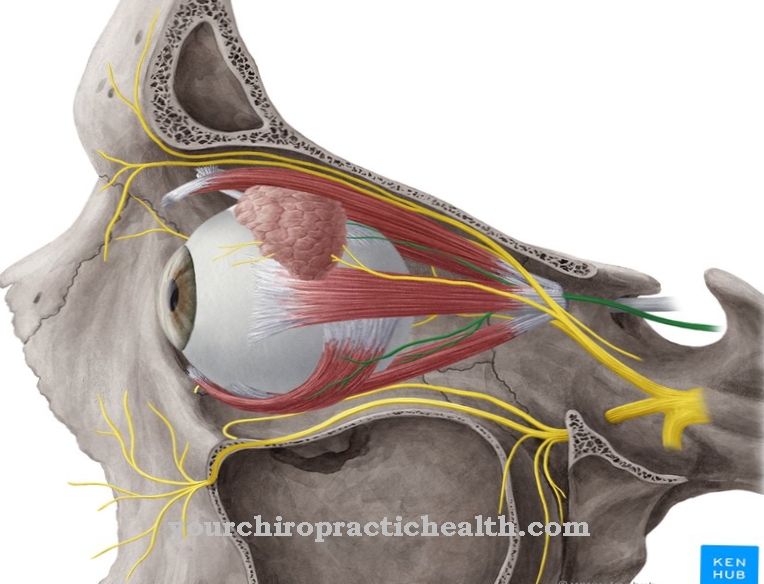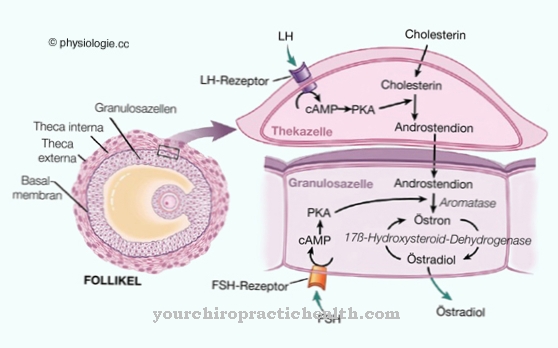As Brain stem (Truncus encephali) is the name given to the area of the brain that is located under the diencephalon. These include the midbrain, the bridge and the elongated spinal cord.
What is the brain stem?
The brain stem is the section below the diencephalon, which encompasses all parts of the brain that form from the second and third cerebral vesicles. According to the definition, this also includes the cerebellum, but for historical reasons it is not included in the encephalic trunk.
Anatomy & structure
The brain stem is about the size of a thumb and connects the sections of the central nervous system together. Behind the brain stem is the cerebellum, above are the diencephalon and cerebrum. The brain stem includes the midbrain, the elongated spinal cord and the bridge. The midbrain is about two centimeters in size and is divided into the quadrangular plate, the hood and the two cranial legs.
The most important nuclei of this area are the so-called formatio reticularis, the black substance and the red nucleus. The bridge consists of the velum medullare, the bridge hood and the bridge foot. The elongated spinal cord has three layers and consists of a hood and an anterior or posterior area. The so-called pyramids and pyramidal tracks run along the front, the olives to the side, the diamond pit on the back and the crushing center inside.
A large number of neurotransmitters and various chemical substances can be found in the brain stem. In addition, the Prussian blue reaction can also be used to detect a very high level of iron, which is stored in the glial cells and in the neurons. The enzymes in the brain stem are distributed according to a certain pattern, with the activity being particularly high in the nuclei of the cranial nerves.
Function & tasks
The core areas of the cranial nerves and all pathways that are involved in the cerebrum run through the brain stem. These include the pathways of the extrapyramidal and pyramidal systems, the cerebellar lateral cord pathways and the pathways of epicritical and protopathic sensitivity. The cranial nerves are mainly located in the area of the rhombencephalon and they are arranged like columns.
The parts of the brain that belong to the brain stem are used for regulation, control, modulation and coordination. The nuclei act as a kind of switching station and control many body functions. The brain stem is responsible for controlling heart rate and blood pressure, as well as controlling sweating and breathing. In addition, it coordinates waking and sleeping and is also vital for reflexes such as coughing, vomiting or swallowing.
The center is formed by the formatio reticularis with the raphe nuclei; there are also ten cranial nerves in the brain stem that regulate balance, are responsible for controlling the muscles of the eyes and face and pass on hearing and taste impressions. Muscle movements are also coordinated from the brain stem. The formatio regularis controls the mood, motor processes, secretion reflexes during digestion and oculomotor reflexes. The brain stem is also the source of endorphin, noradrenaline, dopamine and serotonin.
You can find your medication here
➔ Medicines against memory disorders and forgetfulnessDiseases
A possible disease in the area of the encephalic trunk is the brainstem infarction, which can take different forms. The most severe form is locked-in syndrome, in which those affected are almost completely paralyzed and can only make vertical eye movements. However, the patients are fully conscious and can also perceive complex relationships.
Another form is Wallenberg syndrome, in which the spinal cord is not supplied with enough blood. This leads to movement, swallowing and sensory disorders. In many cases, a brainstem infarction occurs due to hardening of the arteries. How the disease progresses depends on the severity of the brainstem infarction. After a minor heart attack, patients can usually lead an independent life again, but with a severe heart attack one must expect numerous restrictions. If those affected suffer from Benedict's syndrome, the tissue in the midbrain is damaged.
In this case, functional disorders occur on the contralateral side of the body, the pupil is rigid and the patients often see double images. A very classic brainstem syndrome is the so-called Weber syndrome. This is caused by damage to the tissue in the region of the midbrain. Patients see double vision and eye mobility is restricted. The pupil is very dilated and strabismus occurs. Spastic hemiplegia occurs on the opposite side. In Babinski-Nageotte syndrome, the elongated marrow is damaged. It's an alternating brainstem syndrome in which uncrossed and crossed nerve fibers fail.
Those affected suffer from neurological deficits that occur on the contralateral side or on the light side of the body. The developmental and disposition disorders of the brain stem include the most varied forms of Chiari malformations and the Dandy Walker malformation. The Chiari malformation is a malformation which is characterized by a disproportionate size between the metencephalon and the posterior fossa. The symptoms usually appear between the ages of 10 and 40, with those affected mainly suffering from neck and back of the head pain, visual disturbances, hearing disturbances, balance disorders and dizziness.
A fetal developmental disorder of the cerebellum leads to Dandy Walker malformation, in which spasticity and eye movement disorders occur as early as the first year of life. A tumor can also occur in the area of the brain stem, the most common type of tumor being the so-called astrocytoma. A brainstem tumor leads to visual and speech disorders as well as spastic paresis, sometimes headaches, nausea and vomiting occur.
Typical & common brain diseases
- dementia
- Creutzfeldt-Jakob disease
- Memory lapses
- Cerebral hemorrhage
- Meningitis
























.jpg)



